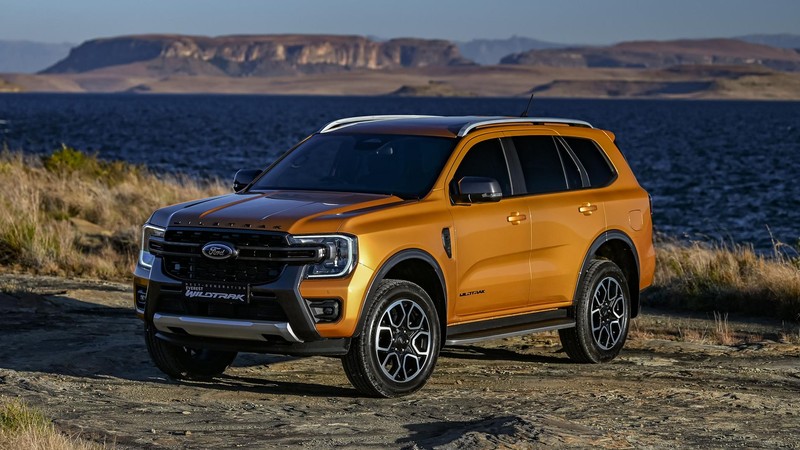
DRIVEN: FORD EVEREST WILDTRAK IS A BULKY, BRAWNY AND LUXURIOUS SUV
As far as bakkie-based SUVs go, the Ford Everest has certainly upped the game in its segment with the latest generation.
It might lack some of the affordable derivatives that its locally-built predecessor offered, but the new Everest offers a literal treasure trove to those shopping in the million-rand-plus league.
One of the most exciting options is the Everest Wildtrak, introduced in 2023. That trim flavour has been popular on the Ranger bakkie for over a decade, but until now it has never been offered on the Everest. The new model is priced at R1,162,700 (in May 2024).
All of that dark-coloured regalia that owners came to love on the Ranger Wildtrak is of course part of the deal here too.
For the exterior package this means dark grey colouring for the grille, front bumper and mirror caps, and snazzy-looking machine-faced 20-inch alloys, although 18” rims with all-terrain tyres are available optionally as an alternative for those who take their off-roading most seriously.
There’s also an exclusive exterior colour option called Luxe Yellow, which will certainly make you stand out in a parking lot full of brown and grey Fortuners.
The interior is frilled up with yellow contrast stitching throughout as well as Wildtrak logos on the power-adjustable front seats.
There’s enough standard features to make an MEC of Government Expenditure blush, including a dual moonroof, Adaptive Cruise Control with Stop & Go, Evasive Steer Assist, Blind Spot Monitoring with Trailer Coverage and a 12-inch Sync4 vertical touch screen with wireless CarPlay and Android Auto.
The cabin is spacious and for the most part well finished with higher-grade materials that are easy on the eye. What’s more the cockpit area, and all of its associated technology, is user-friendly.
The Everest Wildtrak is available exclusively with Ford’s 3.0-litre V6 turbodiesel engine, which pushes 184kW and 600Nm.
It offers beefy performance and you’re never going to be left wanting in that regard, but its only problem is just how good the 2.0-litre bi-turbodiesel fitted to other Everest models really is.
If I was spending my own money, I’d go for one of the four-cylinder models, which offer a great deal of refinement and more-than-acceptable performance, with prices starting at R900,700 for the XLT. Last year I drove this model to the southern Drakensberg and back (read about that here), and I never wished I was in one of the fancier V6 models.
Tipping the scales at almost 2.5 tonnes, the Everest V6 is a heavy vehicle, and thirsty too. Though Ford claims an average consumption of 8.5 litres per 100km, you’ll likely only achieve that on the open freeway. In the real world a combined figure of around 11 l/100km is more likely, or even higher if you spend more time in the urban jungle.
The one advantage that the V6 versions so have, however, is the 4A mode that offers on-demand four-wheel drive at higher speeds, giving you an extra safety net when the roads are wet or traction is limited.
Between us at IOL and Independent Media, we’ve driven thousands of kilometres in the new-generation Everests. They’ve all impressed us with their on road refinement and handling and their comfortable, spacious interiors that are well equipped for family holidays.
As mentioned, the Ford Everest is no longer an attainable option for most SUV buyers in South Africa, but for those shopping around the million-rand mark, it does offer a tantalising array of derivatives that will suit almost every need, as well as impressive off-road ability.
Just a pity they keep insisting there won’t be a Raptor version!
IOL Motoring
2024-05-10T06:32:55Z dg43tfdfdgfd